One great thing about being done the A&S 50 is that I don’t feel bad about doing a recipe where I didn’t do the recreation and the background research is shaky. So, with that said, here’s pretzels.
Ever since I made some modern soft pretzels I’ve been reading about the history of pretzels. Modernly we use boiling water with baking soda in it. Previously they used lye in the water to accomplish the same dark colour. However, I can’t find any use of lye or ash in boiling water in the production of bread products in the SCA period. Some people have suggested that they used malt in the water but again there’s no proof of it. That of course doesn’t mean it doesn’t exist.
Pretzels of course are a period shape
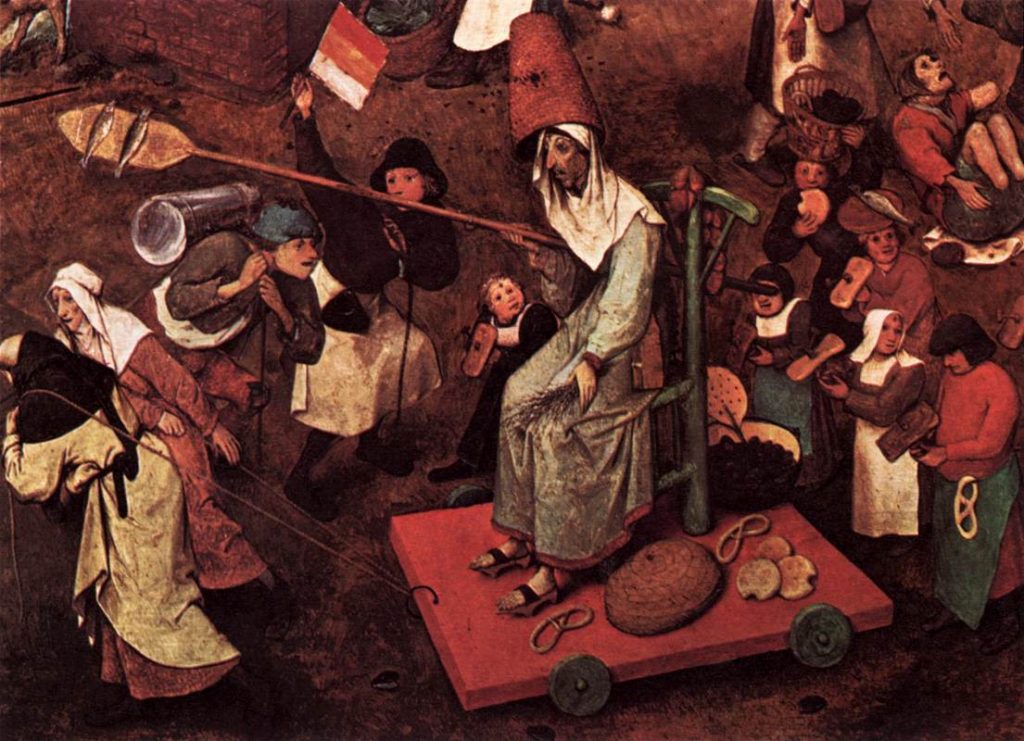
Also, just an aside, but the 1559 painting The Fight between Carnival and Lent is amazing for cooks to study. I’m a huge fan of the waffle maker to the left of this detail from the original image. http://www.wga.hu/frames-e.html?/html/b/bruegel/pieter_e/04/01carniva.html
You can see many more pictures here. You can also see some information on pretzels over at Stefan’s Floregium and some info about bagels.
There are a few schools of thought. One is that pretzels, jumbles, and bagels are all the same dough, I’m not sure about this though as bagels are more of a bread dough while jumbles are more of a confection and the images of pretzels tend to be in conjunction with buns and loaves. So I’m leaning more to that the dough for bagels and pretzels could be the same while confections that use the word pretzel are using that to refer to the shape, not the dough. However that’s a massive assumption.
A note for those wondering what I’m talking about: all three are boiled prior to being baked and are in unique shapes, hence why they’re linked. However while Jumbles recipes generally have a 1:3 sugar to flour ratio (or in one recipe a 1:1) bagels have a 2:15 ratio.
Because of all this I’m making bagels, in the shape of a pretzel. For this I’m using Duke Cariadoc’s recreation of the 1557 Libro Novo recipe.
Bagels of Milk and Sugar
from Messibugio, Libro Novo 1557
To make fifty bagels of four ounces each you will take fifteen lbs of best flour, three ounces of rose water, three pounds of milk, two pounds of white sugar, 25 eggs, four ounces of butter, and you will knead these things together very well.
Then you will make your bagels according to the method you want to use, and then you will let rise with careful attention, and after it has risen you will boil your water, and then you will place inside the above-mentioned bagels to cook, and when they come to the top you will take out, and then you will put in fresh water, and when you have removed them from within you will put them to cook in the oven, and if you want to put inside anise it is a good deed.
—————–
Here is how I did it:(1/6 quantities)
2 1/2 lb flour–about 8c
1/2 oz rose water
1/2 lb milk–about 1 c
1/3 lb sugar=2/3 c
4 eggs
8/9 oz butter
(1 c sourdough)
AniseedsNote 1: The recipes says it produces fifty bagels weighing four ounces each, but uses about 18-20 lbs of ingredients, after allowing for cooking off the water in the milk. I concluded that it was using a 12 ounce pound, like the troy pound or the Islamic ratl, rather than a 16 ounce pound. The finished bagels weighed about 7 avoirdoupois ounces, which is still a little heavy; on my assumption it should have been 5 1/3 ounces.
Note 2: The recipe is for a leavened bread, but no leavening is mentioned. My guess is that it is using either sourdough or a kneading trough with its own yeast culture. I used sourdough.
Note 3: The reasons for interpreting this as bagels are the boiling/baking sequence, the size, and the reference to making the bagels according to the method you want to use, which suggests some special shape or shapes.
Combine flour and sugar; cut in the (softened) butter. Combine the liquid ingredients, including the sourdough, mix, add to the dry ingredients and knead until you have a smooth dough. Cover with a damp towel, let rise at least nine hours. Then divide into nine equal portions, roll each into a cylinder about 9-10″ long, join the ends to form a torus (i.e. bagel shape). Leave it until it has risen again, which should be another five hours or so at room temperature (i.e. 70° F). Your rising times may differ from this, depending on your sourdough culture.
When the bagels have risen, fill a pot at least five inches deep with water, if possible more. Bring the water to a boil. Put in as many of the bagels as you can manage without to much of a problem of sticking. Boil until they rise to the top, which should start happening in three or four minutes. Make sure they have not stuck to the bottom; if they have loosen with a spatula (pancake turner). When each bagel floats to the top take it out, dunk it briefly in a bowl of water, drain, put on a cookie sheet or the like. Bake them in a 400° oven until brown–about 20 minutes.
If you like, before putting them in to bake sprinkle on aniseed.
—
David/Cariadoc
www.daviddfriedman.com
And that’s what I made.
- Kneading the dough
- Not as smooth as I’d like, but I was in a bit of a hurry
- The next day I made my pretzels and bagels
- The tight twist was a success
- Other than the dough splitting a bit this one worked well too
- This one wasn’t quite as good in the end
- Time for them to rise
- Bagels have risen.
- Boiled and into the oven
- Fresh from the oven
- Some of them were more sticks than bagels or pretzels
- I rather liked how this turned out
- Dinner time
- Look at that crumb
Some thoughts from this. I dusted them with salt because I like salt, I think this was a good choice, the unsalted ones weren’t as good, though there isn’t any salt in the dough so all of the saltiness is from salted butter. My pretzels were much too thick, if you look at the pictures the period ones were about twice as long, which makes a much less connected final look. Also I use oil to keep the dough from sticking to the bowl, I probably should have used linen instead as the oil kept the dough from sticking to itself during the forming stage. I could dip the ends in water to get rid of some of the oil before forming. All problems for next time though… and there will be a next time.
The most important thing is that they were delicious.
Oh and one final note, although it was my search for pretzels that lead me here they are based on Italian bagels rather than German pretzels, so whether or not they have any relation to period pretzels is up for debate. That’s why I’m calling this post Bagels/Pretzels.
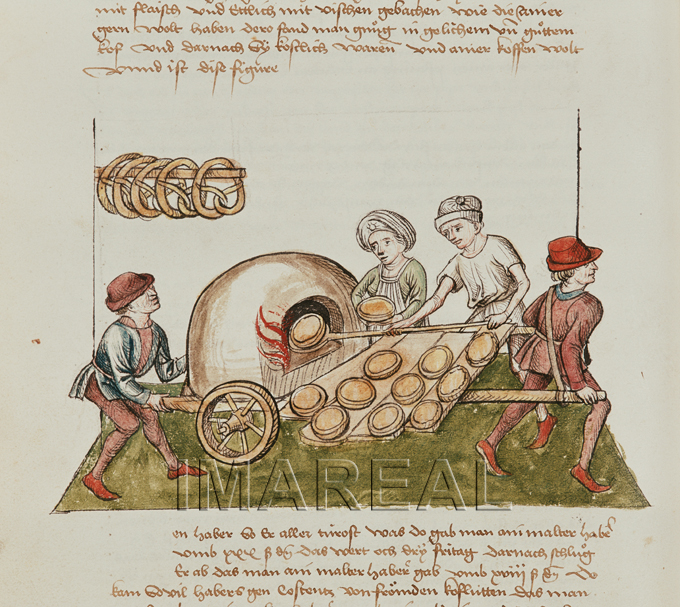

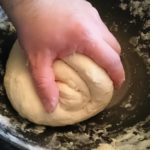
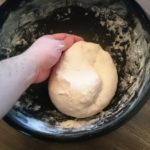
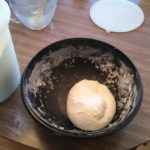


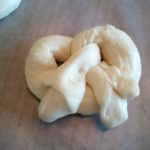






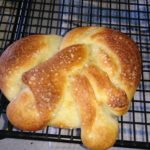

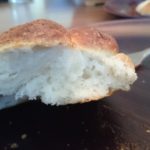
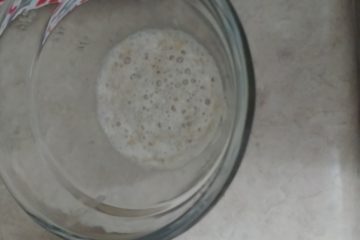
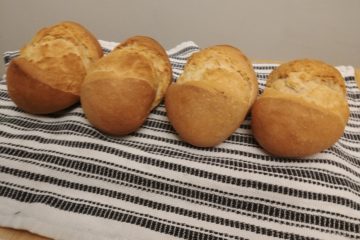
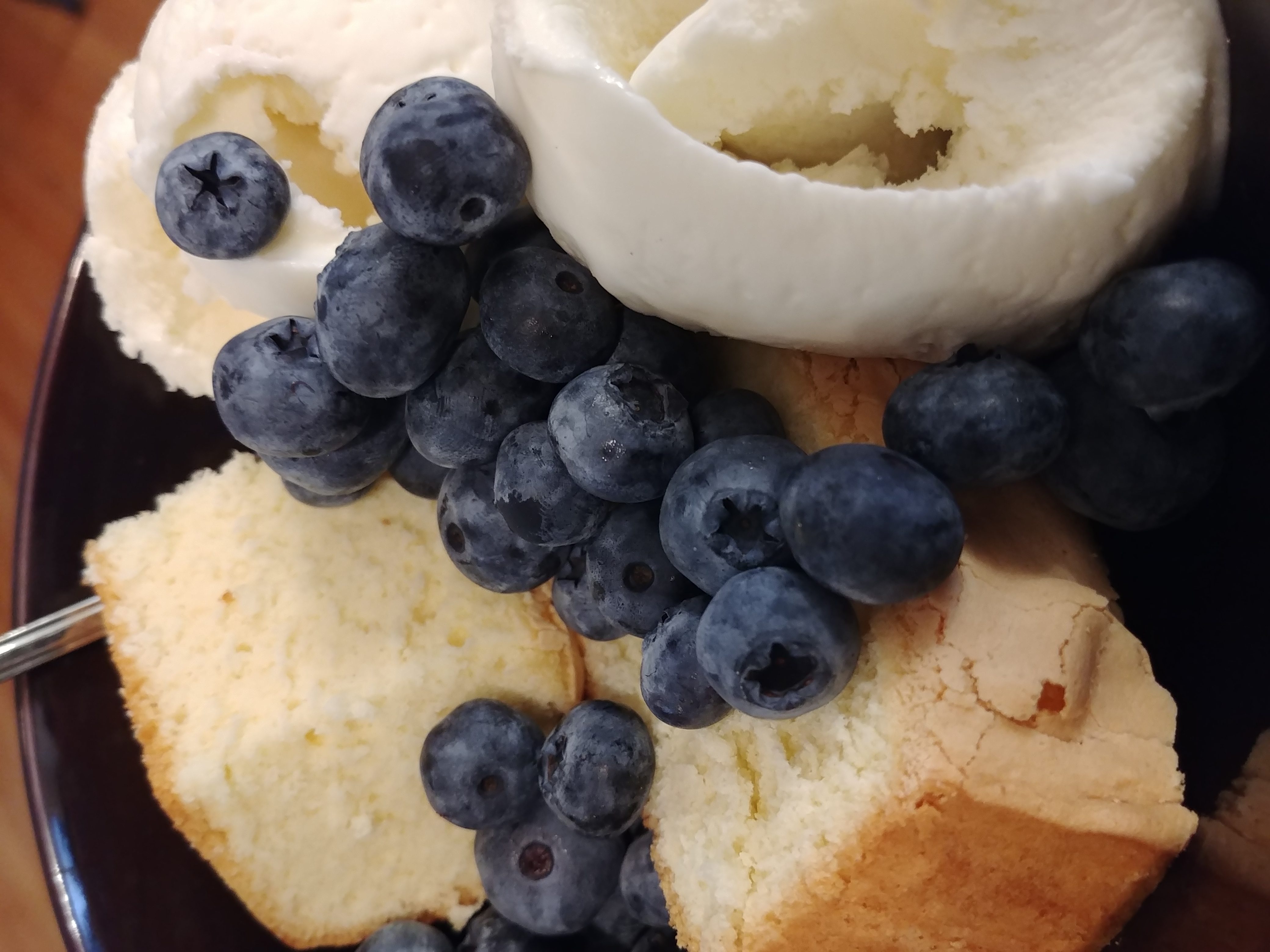
You must be logged in to post a comment.